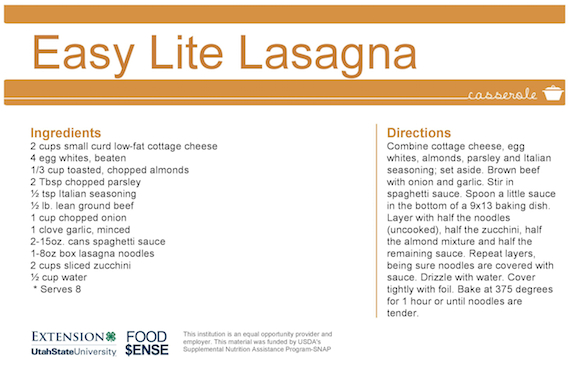How to have Themed Family Mealtime

Enjoying a family meal is a great way for families to bond and create lifelong memories, however it is something that some families struggle to do five or more times a week. A themed family meal can get all family members involved and put a spin on an everyday, mundane event. Here are some fun ways to start having family mealtimes or if you already have family mealtimes, change up the routine!
1. Have one night a week dedicated to a theme, i.e. Taco Tuesday, Meatless Monday, Wok Wednesday, Western Wednesdays, etc.
2. Try adding decorations to your meal to really get your family involved. Put a red and white checkered tablecloth on the floor and have your own picnic inside (if weather permits go all out and have a picnic outside).
3. Highlight a holiday each month and have a meal centered around it. For example, cook green foods or traditional Irish cuisine for St. Patrick’s Day.
4. Travel the world by cooking traditional dishes from different countries. Add some fun facts from that country for interesting family table talk!
5. Make it a whole night. Dinner and a movie -have dinner, some movie theater treats, and then watch a movie together. Try tying your movie into your dinner theme, like fried chicken and What About Bob?, or spaghetti with Lady and the Tramp.
6. Your very own chopped! Provide three ingredients to family members and let them come up with a meal for the whole family with other ingredients in the kitchen.
This month try something new with your family. Here are a few recipes to kick start your own St. Patrick’s Day themed dinner— or you could go with the classic corned beef and cabbage!
Irish Stew
- 2 lbs stewing steak cut into small pieces
- 8 large potatoes, diced
- 4 to 6 large carrots, diced
- 2 large onions, diced
- Salt and pepper to taste
Brown beef and add to stewing pot or slow cooker along with juices. Add potatoes, salt and pepper, and 4 quarts water (more or less, as desired). Bring to a boil. Add carrots and onions. Simmer on low for 1 to 2 hours until potatoes can be pierced with a fork.
Optional variations: Add 1 to 2 cups of diced celery with carrots and onions. Add 1 to 2 tsp of dried thyme with potatoes. Use beef broth in place of water. If desired, you can add a little flour mixed with water (a roux) to the simmering soup about 20 – 30 minutes before serving to thicken broth, but traditionally, it is a fairly thin soup.
Irish Soda Bread
Ingredients:
- 4 Cups all-purpose flour
- 4 tablespoons white sugar
- 1 tablespoon baking powder
- ½ teaspoon salt
- ½ Cup butter, softened
- 1 Cup buttermilk
- 1 egg
- ¼ Cup butter, melted
- ¼ Cup buttermilk
Directions:
1. Preheat oven to 375 degrees F (190 degrees C). Lightly grease a large baking sheet.
2. In a large bowl, mix together flour, sugar, baking soda, baking powder, salt and softened butter. Stir in 1 cup of buttermilk and egg. Turn dough out onto a lightly floured surface and knead slightly. Form dough into a round and place on prepared baking sheet. In a small bowl, combine melted butter with 1/4 cup buttermilk; brush loaf with this mixture. Use a sharp knife to cut an ‘X’ into the top of the loaf.
3. Bake in preheated oven until a toothpick inserted into the center of the loaf comes out clean, 45 to 50 minutes. Check for doneness after 30 minutes. You may continue to brush the loaf with the butter mixture while it bakes.
Colcannon (Irish Potatoes and Cabbage)
- 6 medium potatoes, washed, peeled (optional) and quartered
- 2 cups grated cabbage
- 4 tablespoons butter
- ½ teaspoon salt
- ⅛ teaspoon pepper
- 2 stems of green onion, chopped
Add potatoes to a large pot of boiling, salted water, and cook until tender, about 20 – 25 minutes. When the potatoes have cooked 15 minutes, add the cabbage and continue boiling until the potatoes are fork tender. Right before draining the potatoes and cabbage, add the chopped green onion and cook for one minute. Drain the potatoes and mash them. Add the milk and butter. Adjust milk if potatoes are too dry.
Key Lime Meringue Pie
One baked 9-inch pie crust of your choice
Key Lime Curd:
- Finely grated zest from 4 limes
- ⅓ cup lime juice
- ½ cup granulated sugar
- 3 large eggs
- 3 large egg yolks
- ¼ teaspoon salt
- 8 tablespoons unsalted butter, cut into small pieces
- 1 cup heavy whipping cream
- Green food coloring, if desired.
In top of double boiler, whisk lime zest, lime juice, sugar, eggs, egg yolks and salt. Whisk constantly until the mixture becomes thick, about 12 to 15 minutes. Remove from heat and whisk in butter one piece at a time until smooth. Add a few drops of food coloring for a brighter green, if desired. Strain curd through a fine-mesh sieve into another bowl. Line the surface of the curd with plastic wrap and chill in the fridge for about 30 minutes. Whip cream to soft peaks and fold into the chilled curd. Pour into completely cooled pie crust.
Meringue:
- Egg whites from 4 large eggs
- ⅔ cup granulated sugar
- ¼ cup powdered sugar
- 1 teaspoon vanilla extract
- ¼ teaspoon salt
Preheat oven to 375° F with the rack positioned about 8-inches from the top of the oven. Beat egg whites for about 5 minutes and gradually add granulated and powdered sugars in a slow and steady stream. Add vanilla and salt. Increase the speed and beat for about 10 minutes or until the meringue becomes very thick.
Spread the meringue over the curd and cover up to the edges of the curd and crust. Swirl and create peaks using a spatula. Place pie plate on a baking sheet and bake for 10 to 12 minutes, rotating it halfway through the baking time. Meringue peaks should be a beautiful light golden brown with white “valleys”. Completely cool pie on a wire rack before chilling in the fridge for at least an hour before serving. Best served the same day it is made.
By: Jaqueline Neid-Avila, RDN, CD Extension Nutrition Assistant Professor











